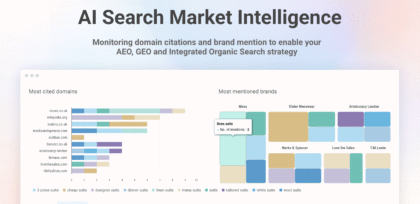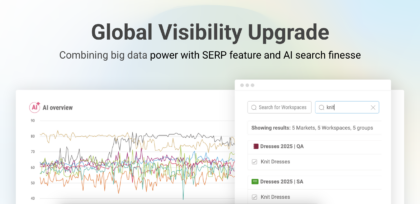Search Intent: Building An Intent Driven Strategy with Search Features
24 Mar 2020|3 MIN READ
On Wednesday, March 18th we took SEO in the Shed Live Online! I spoke about the importance of building search intent into your strategy.
When you're looking to build a search intent driven content strategy, it’s all about understanding and getting three things right:
1. Your customers
2. Google and the SERP landscape
3. Your content ecosystem
Search intent has become easier to understand as the SERP has evolved
Where once we were simply served 'Classic links', search engines now showcase a multitude of rich features including 'Video carousels', 'Top stories', 'Product ads' and so on.
The features present for each search reveal a lot about what the customer is looking for (i.e. search intent), as search engines serve up features that perform best for the result in question.
Therefore, the answers we need to shape our content strategy and open more doorways into our online world lie in the SERP itself.
Customers have evolved too
Something that is hugely important to remember is that search intent is not fixed. What customers are looking for changes according to the stage in their purchase journey.
As search engines have evolved, customers have too. They expect richer, more instantaneous answers.
As a result, it's essential that we don’t just think about blue links, but all of the possible different doorways that a customer could come through to find our website, in order to best match our customer's intent.
And there can be multiple doorways at any point in time!
By analysing search intent data we can understand a great deal about our customers!
The SERP is a reflection of search INTENT, which we already know changes according to the stage of a customer's purchase journey.
As a result, search enginges can give us a LOT of DATA.
Given the relative anonymity of the search box, people feel comfortable telling search engines their thoughts, or asking questions surrounding their worries and curiosities.
Search engines therefore spend millions of dollars to ensure that the SERP is a true reflection of searcher intent.
Search intent: What does your customer really want?
The five things that we need to understand about our customers, or the five questions we need answers to if we are to provide the most appropriate content at the right stage of their purchase journey are as follows:
1. What are they looking for?
2. What questions are they asking?
3. What are they thinking? (This is influenced by question 4 below)
4. What content are they consuming?
5. What is their intent?
If we have the answers to these questions, we have all the data we need to create a connected online ecosystem that will present the right content to searchers - regardless of where they are in the purchase journey.
And we can answer all of these questions with an understanding of page one content in the search engines! Below is an example data capture of the SERPs for a single search term - it returns numerous rich SERP Features.
Once we know what our customers are looking for with visuals of the SERP landscape, we can then...
- Determine their broad intent
- See the content they're consuming
- Understand the questions they're asking
- And build an intelligent content strategy....
And, once we've understood what the search landscape looks like for numerous different searches, we can understand how the landscape changes for different types of intent - noting the different types of content and features that typically appear.
There are numerous different forms of intent - below are some examples. The features appearing in streams may differ slightly according to industry type but nevertheless, the patterns will be the same.
The importance of connections in satisfying search intent
It's vital that once we've grouped content by intent that we make appropriate links between semantically related items within each intent group!
Furthermore it's also essential that we make the same connections between streams of intent. These connections have two key benefits:
1. When clearly signposted they will encourage our visitors to discover new, semantically related and relevant content. They're also going to stay in our ecosystem for longer.
2. This gives Google a much clearer understanding of the structure of our ecosystem and its contents, leading to better visibility for a greater range of content through multiple features.
Here's a rough doodle visualising those connection both within and between search intent streams...
Enjoyed this content?
Like & Subscribe on YouTube!
Book a demo of Pi if you liked our software!
Join my Working From Home webinars every Friday: https://register.gotowebinar.com/#register/529139276972759052
Join our Slack Channel and connect with a community of SEOs: https://bit.ly/3dtaUsX
Sign up to Shed News: https://hubs.ly/H0nQ5TJ0
Follow me on LinkedIn: https://www.linkedin.com/in/jonearnshaw/
Follow me on Twitter: https://twitter.com/jonearnshaw
Never miss a post
Join our mailing list and have our SEO news delivered straight to your inbox.





